
Art/Science Concept and Design: Diemut Strebe
Technology on Blackest Black: Brian Wardle
CNT Growth on Diamond: Brian Wardle, Luiz Acauan, Estelle Cohen
This 16.78 carat natural yellow diamond (Fancy Vivid Yellow SI1, Radiant shape, value
$ 2.000.000,- ) has been provided by L.J. West Diamonds, Inc. for The Redemption of Vanity project.
“The Redemption of Vanity” presents a 16.78 carat naturaI yellow diamond (Fancy Vivid Yellow SI1, Radiant shape, value $ 2.000.000,-) the most brilliant material on earth covered with carbon nanotubes, the most light absorptive material (the blackest black on earth), which makes the diamond appear to disappear.
The literal devaluation of a 2 Million Dollar diamond can be seen as a challenge to the art market and a statement on the arts by means of an aesthetic asceticism.
The Redemption of Vanity is an Artwork on the Intersection of Art and Science Presented at The New York Stock Exchange on 13th September 2019.
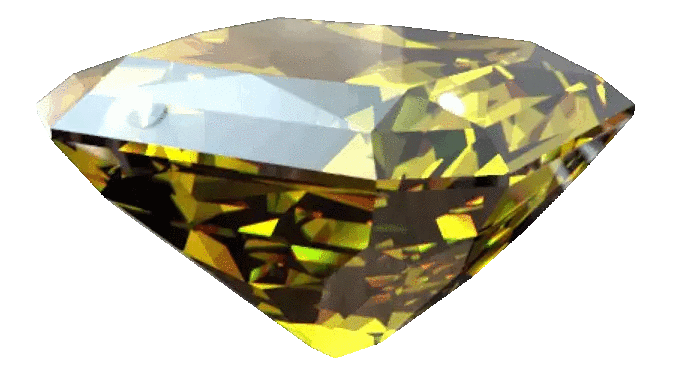
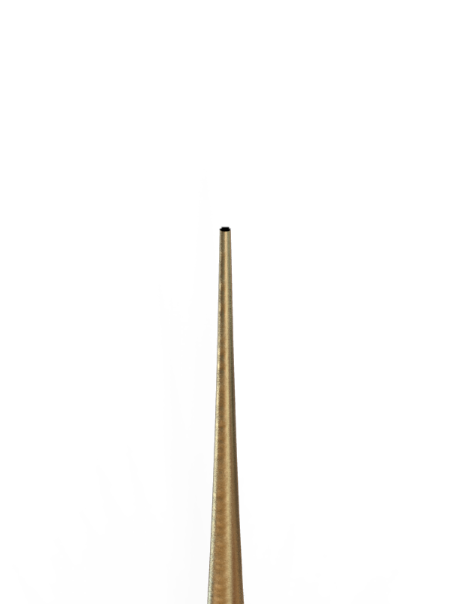
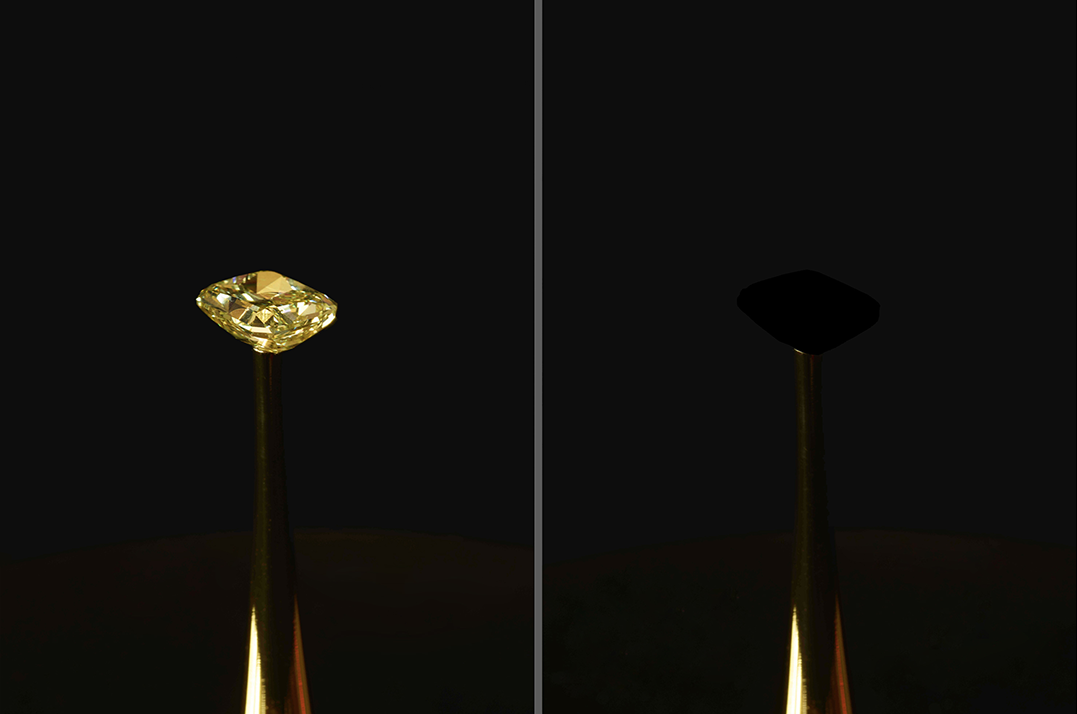
The Redemption of Vanity
Left: 16.78 carat natural yellow diamond
Right: The diamond covered with the blackest black on earth
Exclusive Image Copyright: Diemut Strebe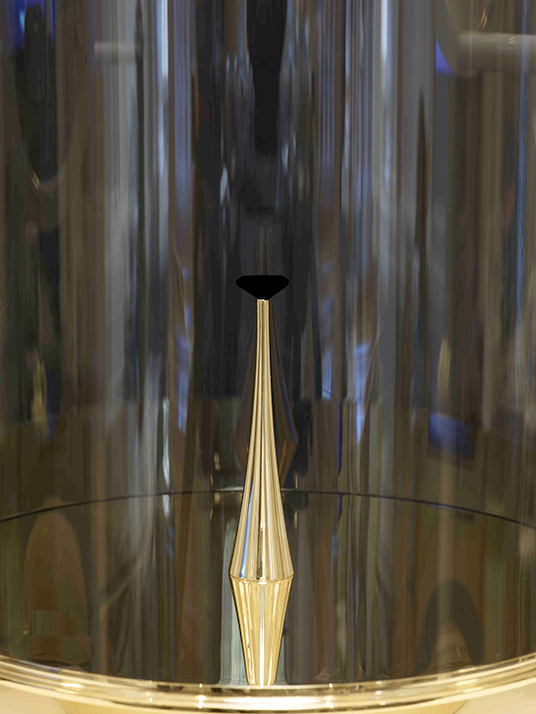
The Redemption of Vanity
Presentation at the opening on 13th September 2019 at The New York Stock Exchange.
Exclusive Image Copyright: Diemut Strebe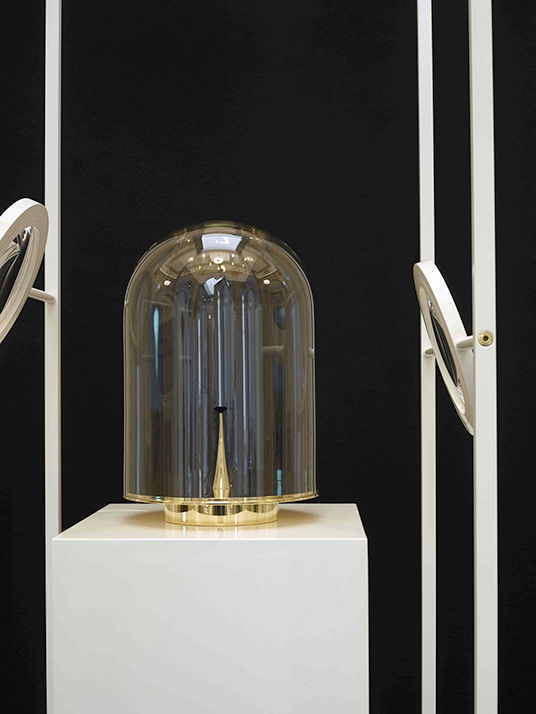
The Redemption of Vanity
Presentation at the opening on 13th September 2019 at The New York Stock Exchange.
Exclusive Image Copyright: Diemut Strebe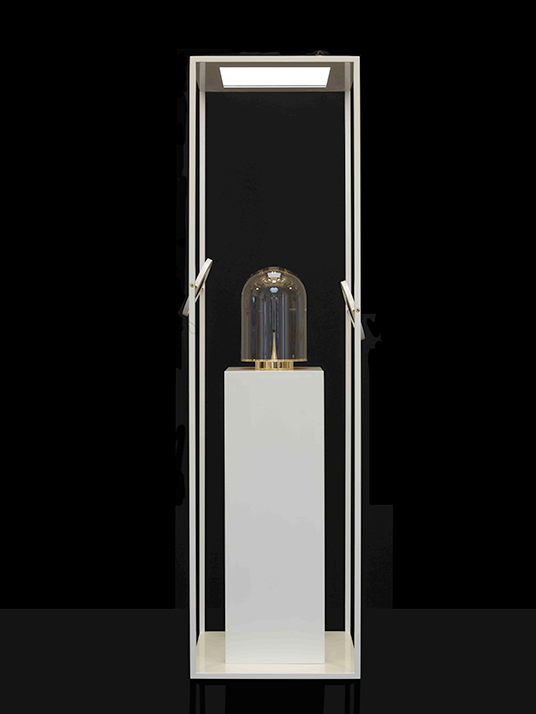
The Redemption of Vanity
Presentation at the opening on 13th September 2019 at The New York Stock Exchange. A security guard is part of the display.
Exclusive Image Copyright: Diemut Strebe
The Redemption of Vanity
Artist Diemut Strebe at the opening on 13th September 2019 at The New York Stock Exchange
Exclusive Image Copyright: @Nyse and Diemut Strebe
A 16.78 carat natural yellow diamond (Fancy Vivid Yellow SI1, Radiant shape, value $2,000,000) is covered with the blackest black on earth, which makes the diamond appear to disappear.
Grown nanotubes, tiny hollow carbon cylinders, will shape a microscopic ‘forest’ on the shiny surface of the diamond. When a photon enters the spatial forest structure, which is mainly consisting of empty space, it is encaged and bounces around until it dissipates as heat. The carbon nanotubes (short CNT’s) absorb 99.965% of the light.
Any object covered with this material loses all its plasticity and appears entirely flat, abbreviated to a black silhouette, by erasing any shadow in outright contradiction to this we see that a diamond, while made of the very same element (carbon), enacts the most intense reflection of light on earth.
The different structural forms of the arrangement of the carbon atoms create opposing extremes in appearance on exposure to light. In formal respect the project represents the paradoxical combination of two opposites coinciding in the same object. The form that maximizes the return of light (diamond cut) is covered with a surface that maximizes its absorption. In effect the CNT’s material properties appear almost “immaterial”, as the void of a black hole.
The covered diamond is presented on a small elongated golden foot encased in a safety class chamber mounted onto a pedestal. In order to be able to “see” the deprivation as efficiently as possible, the display is equipped with illuminated magnifiers. Part of the display is an armed security guard.
The project explores how material and immaterial value is attached to objects and concepts in reference to luxury, society and to art.
The literal devaluation of an object of highly symbolic and economic value can be understood in respect to the embracing forces of art market mechanism on the one hand, while expressing at the same time questions of the value of art in its more broader sense.
We use a new developed method patented by MIT that is measurable the blackest black on earth, that can be used by any artist.
We do not believe in exclusive ownership of concepts, ideas or materials in the arts.
Author of the Concept: Diemut Strebe
Diemut Strebe, Display for Diamond
Frame with 2 magnifying glasses; Daylight Company, Omega 7 lens, 175mm; Skylight: Fotodiox Pro 18x18 inch dimmable color photo LED;
Frame: square tubes or bars 20 x 20mm; steel epoxy coating white, RAL 9010; Pedestal steel epoxy coating white, RAL 9010 Diamond display: glass dome, 250 x 350 x 5mm: Schott Duran, high transparent colorless glass; solid brass base, top gold plated: Diamond support cone, gold 18 carat; solid or 3D printed.
Frame with 2 magnifying glasses; Daylight Company, Omega 7 lens, 175mm; Skylight: Fotodiox Pro 18x18 inch dimmable color photo LED;
Frame: square tubes or bars 20 x 20mm; steel epoxy coating white, RAL 9010; Pedestal steel epoxy coating white, RAL 9010 Diamond display: glass dome, 250 x 350 x 5mm: Schott Duran, high transparent colorless glass; solid brass base, top gold plated: Diamond support cone, gold 18 carat; solid or 3D printed.
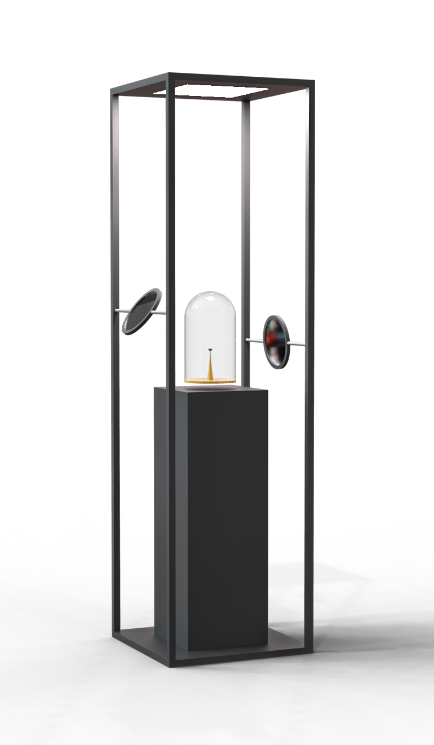

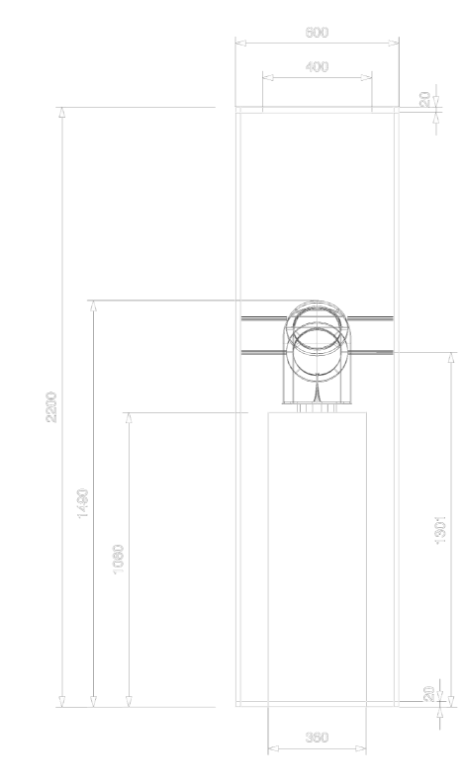
Carbon Nanotubes
Inspired by the art project, Brian Wardle and his team developed a CNT growth method that is so far the measurable blackest black on earth.
Grown nanotubes are tiny hollow carbon cylinders that shape a microscopic ‘forest’. When a photon enters the spatial forest structure, which is mainly consisting of empty space, it is encaged and bounces around until it dissipates as heat.
CNT’s are extremely black, casting no shadows on the object, therefore plasticity and 3D appearance are abbreviated to flatness and the almost immaterial of the void. They absorb 99.965% of the light.
Diamond (sp3) and CNT’s (sp2) are made of the very same element (carbon). The different structural forms of the arrangement of the carbon atoms create opposing extremes in appearance on exposure to lights, while coinciding in the same object: the art piece.

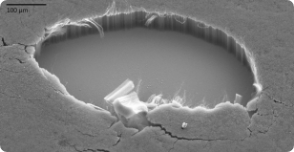
Most single-walled nanotubes (SWNTs) have a diameter of close to 1 nanometer. A human hair is approximately 80,000-100,000 nanometers wide
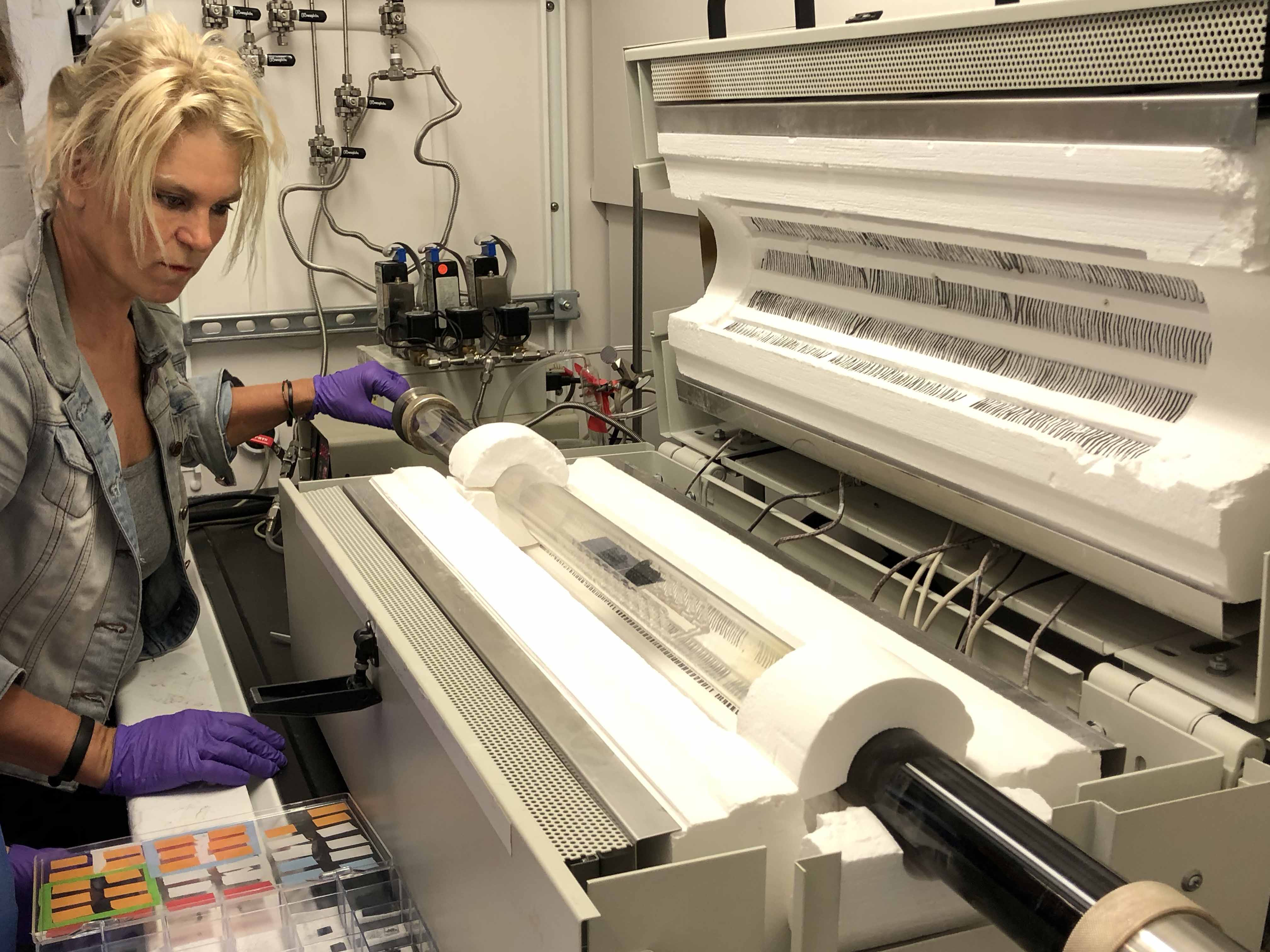
In Brian Wardle’s necstlab at MIT
I am a German-born artist based in America, Boston and currently Artist in Residence at MIT. https://arts.mit.edu/artists/diemut-strebe/#about-the-residency
My works link art and science to address contemporary issues, often incorporating themes related to philosophy and literature. I explore the crossover between science and art through media such as living and biological materials, nanomaterials, experimental set ups, installations and video. This practice includes scientific concepts, methods and tools. The collaborations with scientists take place in the fields of human and plant genetics, quantum- and astrophysics, and various types of engineering.
The heterogeneous appearance of my works results from the variety of topics and strands in science I deal with. The conceptual approach of the works may be similar and comparable, but the complexity of subjects certainly leads to a diversity of artistic results.
Focused on the advanced science of our era, I feel attracted to affirm the Romantic paradigm of “the new” throughout the medium itself and its combination with the arts.
My work is represented by Ronald Feldman Fine Arts, New York. More at my website:
Diemut Strebe.
Download CV
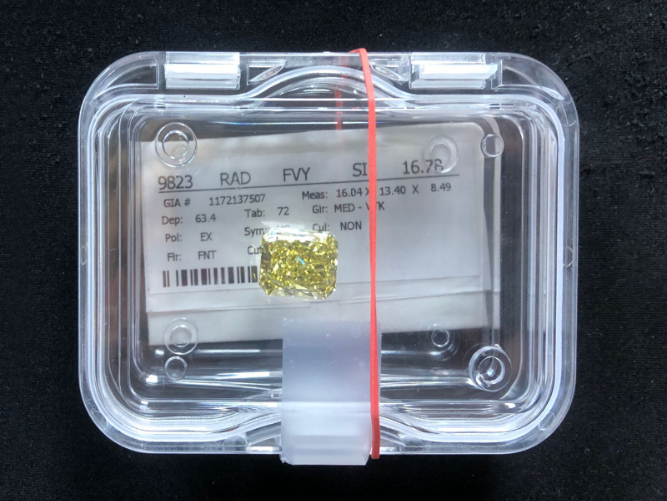
The $2M USD brilliant yellow diamond arrives at MIT from LJWest for CNT growth.
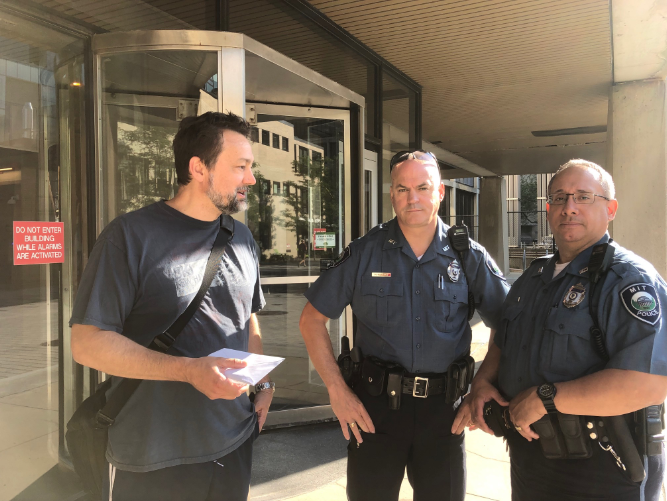
Transfer of the stone to Brian Wardle and MIT Police
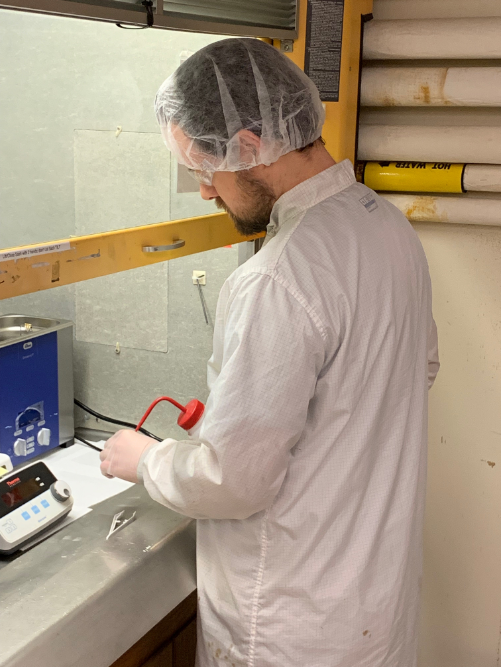
Acauan in the MTL EML cleanroom preparing the diamond for processing.
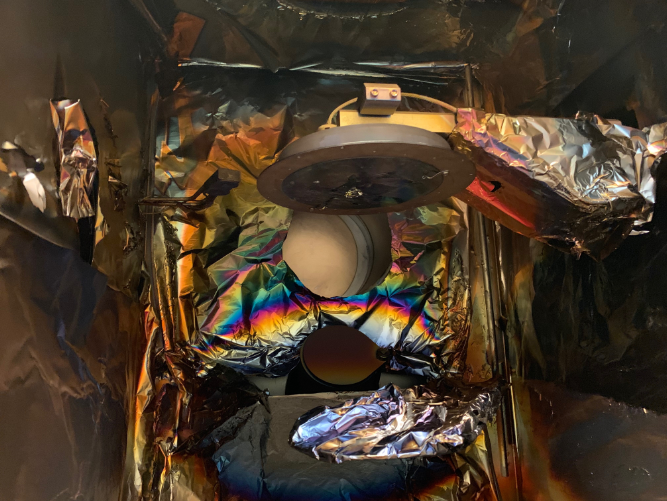
The diamond prior to e-beam processing of catalyst layers in the MTL EML electron beam (e-beam) chamber.
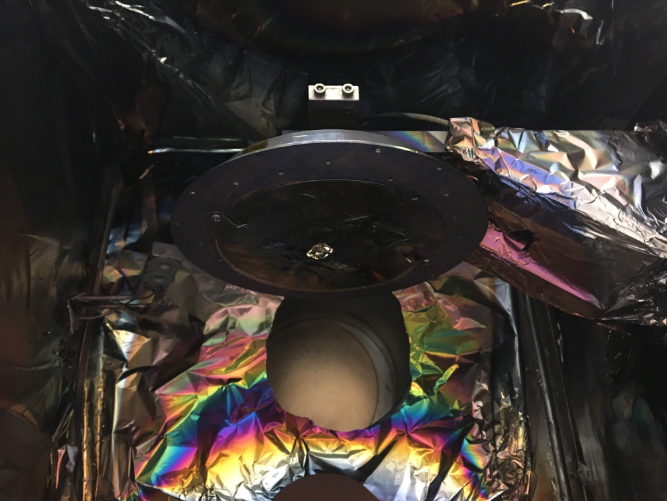
Close up of previous image
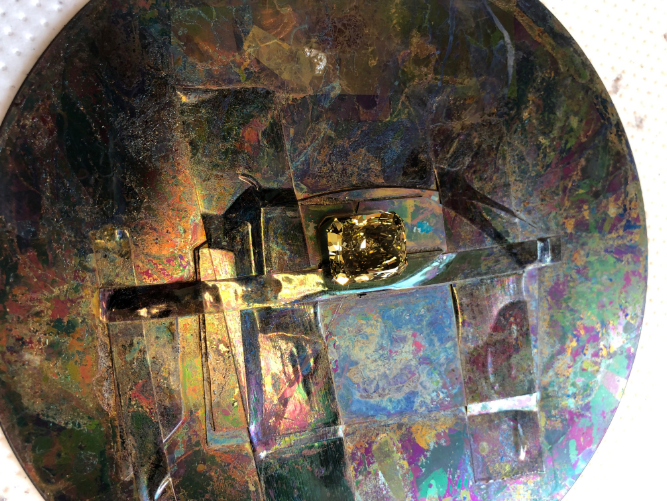
The diamond on a substrate for processing in MIT’s MTL EML lab.

Luiz Acauan and Estelle Kalfon-Cohen inspect the diamond during removal from a processing substrate in MIT necstlab, just prior to CNT growth.
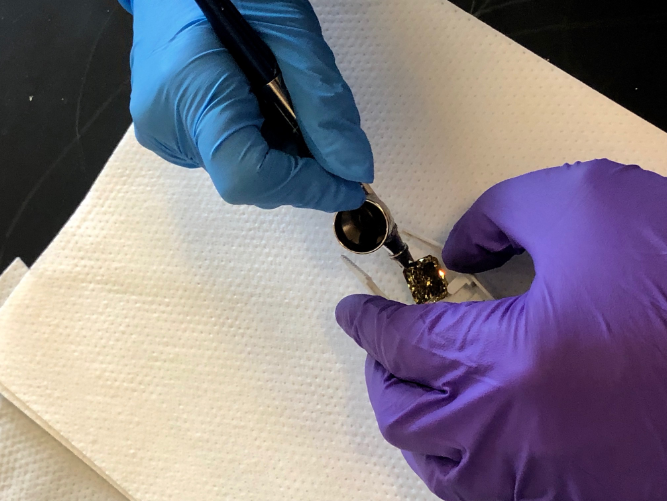
Cleaning of the diamond before CNT growth: The cleaning process for the CNT growth is substantial- The surfaces of the diamond must be perfectly cleaned before each process step to ensure the nano-scale structures are not affected by micro-scale dust particles.
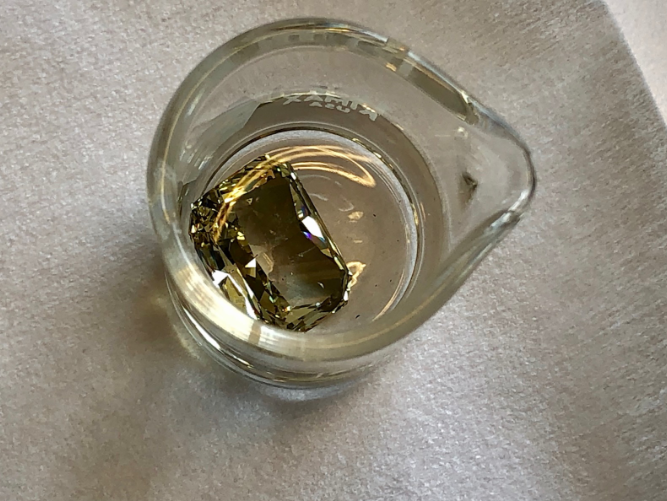
Diamond in solvent for cleaning
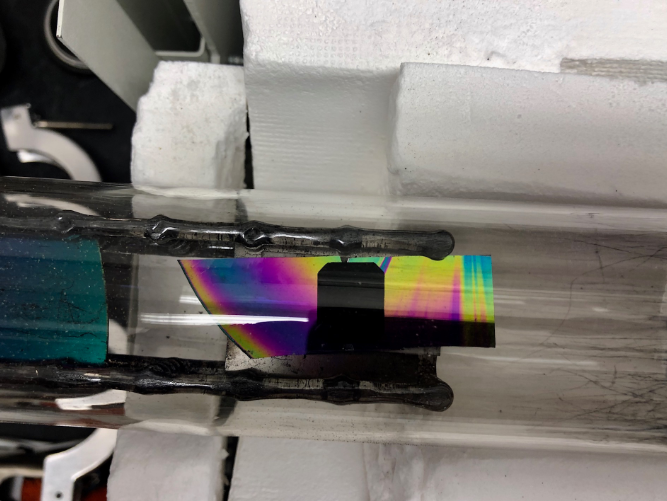
The diamond in the CNT growth chamber in necstlab. The rainbow reflection is from the surface of the shiny Silicon support piece.
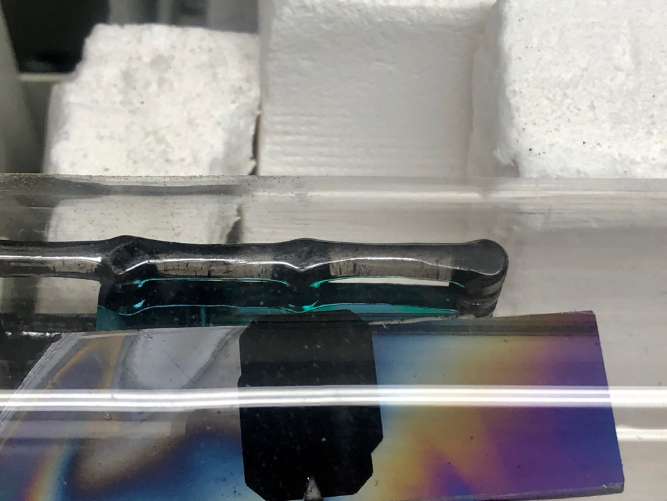
Close up of previous image
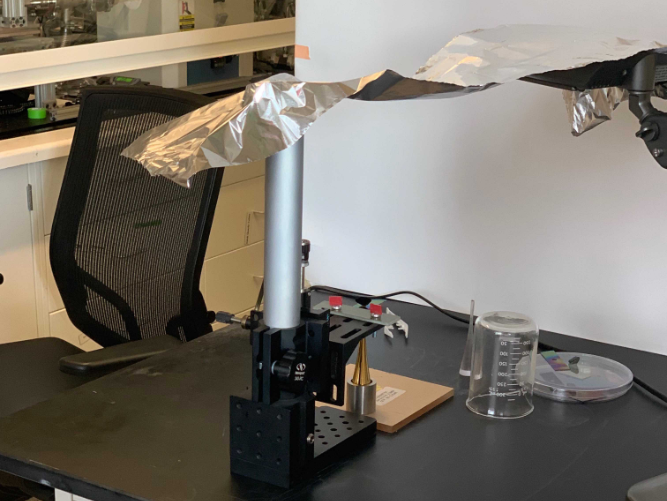
The diamond after CNT growth in MIT’s necstlab. The diamond is attached to the golden foot of the display in this processing step.
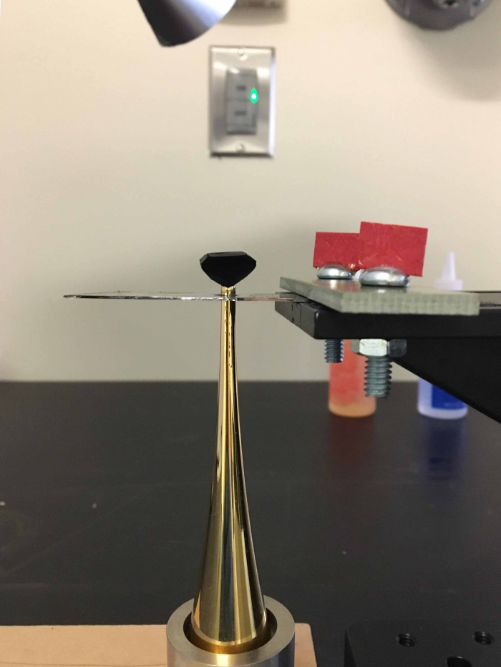
The diamond is attached to the golden foot and the next step will be the removal (breaking) of a Silicon support piece (pictured below the black diamond).
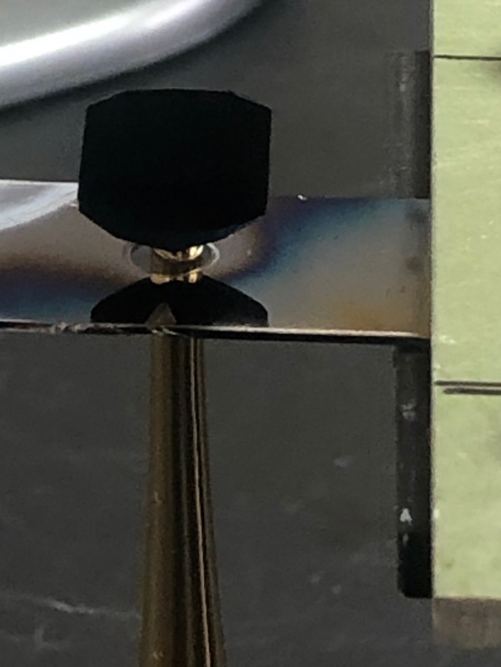
Close up of previous image
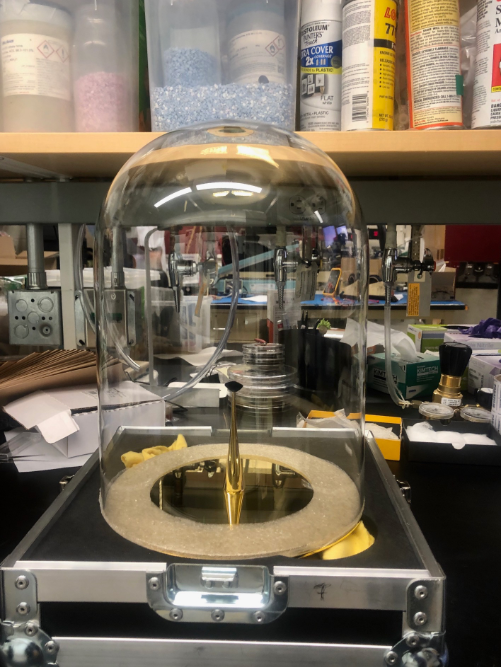
The assembled display in the MIT’s necstlab lab Diamond on the golden foot, attached to a golden plate and covered by the glass dome.
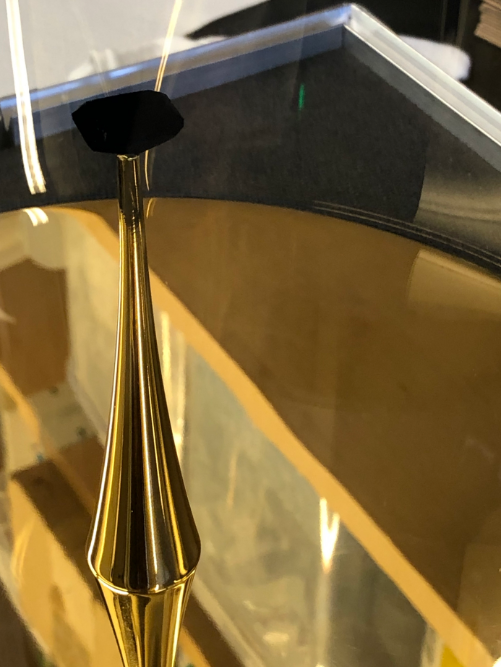
View diamond covered with CNT’s attached to foot
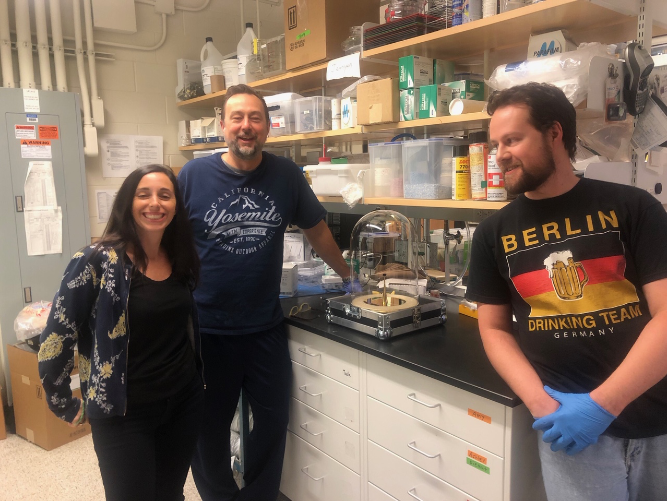
The team that grew the blackest black on earth on a 2 Million Dollar diamond at MIT: Brian Wardle, Luiz Acauan, Estelle Cohen Prof. Wardle’s research group, necstlab, pursuits novel and strategic use of nanofibers for use in many applications, primarily aerospace structural applications. Photos: Diemut Strebe and Brian Wardle
The Redemption of Vanity is an art project conceived and designed by Diemut Strebe. The Blackest Black CNT Growth on the Diamond, Development with Patented Paper and Execution of CNT Growth on Diamond has been made by Brian Wardle, MIT . His team: Luiz Acauan, Estelle Cohen.
The diamond covered with the blackest black for The Redemption of Vanity has been provided by L.J. West Diamonds, Inc.: Larry West, Scott West. L.J. West Diamonds, Inc. also sponsored part of the display.
Design and Organization: Diemut Strebe with Stefan Strauss
Project Management from 2014-2019: Diemut Strebe together with Robert Langer, from 2016 on Brian Wardle joined
The project is made possible by the support of MIT Center for Art, Science & Technology (CAST) within the setting of Diemut Strebe’s Ida Ely Rubin Artist in Residency at the MIT Center for Art, Science & Technology from 2017-2019
Host of the art project for the show: The New York Stock Exchange
My mentor, colleague and friend Robert Langer has been of extraordinary support for the entire project span from 2014-2019 and has made major managerial and other contributions for the project. Further I thank Antonio Severino for the excellent fabrication of the foot for the diamond. For his continuing support in 3D digital creations I thank Joshua Qualtieri and Shawn Allan (Lithoz) on 3D printing contributions. Thanks very much to the extraordinary support from Paola and Paolo Marcucci. For additional important contributions around the project I thank Alan Guth, Maria Montez, Charles Vacanti and Werner Runge. The realization of The Redemption of Vanity from Brian Wardle and his team on the MIT campus had contributions from around the Institute, including Prof. Jesus del Alamo and Dr. Vicky Diadiuk (Microsystems Technology Laboratory), Ashley Kaiser (MIT necstlab), EVP Israel Ruiz, Sandra Mitchell, and Regina Dugan (MIT Administration), John DiFava, Captin Craig Martin and several MIT police patrols (MIT Police), Prof. A. John Hart (MechE, mechanosynthesis group), and Anthony Zolnik (AeroAstro). Alexandra H. Wardle, Gerry McGuire (Scio Diamonds).The Website is a donation from Paolo Andriolo in support of the art project. Realization of the website: Roberto Capanna and Alessandro Berlato.


